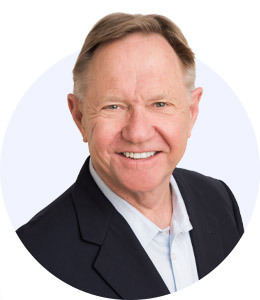As I continue to be out and about and inside many organizations, I am impressed with the passion and commitment I see, hear, and feel. These past several years have led many to feel that they were in a “valley of despair.” Today, while we have hopefully come out of the deepest part of the valley, most people understand that things have changed. Some call it the “new reality.” My colleague Dan Collard calls it the “now reality.” What he means is that adjustments will continue for the foreseeable future.
When I listen to senior leaders, the topic is always around how to get better. Even the very best workplaces have, for the most part, experienced a decline in employee engagement since the pandemic. The reasons are detailed in my book Rewiring Excellence: Hardwired to Rewired.
A common survey item that organizations don’t always perform well on is: “My employer cares about my well-being.” This is true even if an organization provides several well-being resources. To help in this area, I wrote The Well-being Handbook, available to download for free at www.healthcareplussg.com. A suggestion is for those in senior leadership to regularly look into the utilization of resources such as the employee assistance program (EAP)—not who is using the resource but how much it is being used.
Another key metric that shows up in organizations’ early diagnoses is experience levels. It is very common today to find that more than 25 percent of people in a leadership role became leaders during the pandemic. It is a challenge being a new leader at any time; however, during the pandemic, leadership development was paused or reduced and held virtually (for good reason). Also, peer-to-peer conversations were not as available. In my first supervisory role, those coffee times with other supervisors were a lifeline. The solution is not just, “Let’s provide lots of training.” We need to look at how we are providing it. Skill-building needs to be individualized and sequenced.
Yet another metric to watch is the number of new staff members. We often find that over 30 percent of frontline staff are new to the organization or are new to the area they are working in. This means they need time to adjust to those they work with, as well as the systems and processes.
Here are a few tips:
Be proactive in addressing employee well-being. Let each person know that you and the organization are committed to their well-being. Share The Well-being Handbook download (note that printed copies are available at a cost of $5). Each month, review parts of the Handbook and hold one-on-one discussions about the color-coded tools meant to instigate safe conversations. I believe every organization cares about each person’s well-being. We need to be proactive versus reactive in this area. In addition, items such as staffing and resource shortages must be addressed.
Rewire how skills are developed in new leaders. Yes, large- or small-group skill-building sessions are good. However, they will not achieve the retention of talent and outcomes that are needed. Take time to assess each leader’s current skills and needed competencies. Use the great tools that are available to build a person’s self-awareness. Be sensitive that those new in leadership are in a steep learning curve. Select one skill at a time and mentor the person to build their skill set. There is a chapter in Rewiring Excellence on rewiring the way individuals are developed that might be helpful.
Rewire onboarding. With so many new people working in organizations, be aware that lots of new employees will be very overloaded early on. If these people are to stay, they need to be set up for success and feel that sense of belonging (“this is the right place for me”) right away. Though they went through orientation, consistent onboarding and repetition are important. The key is not how often something is said—the key is, Is it being comprehended? For all new people, including those new to leadership, create a personal retention plan. This can also be found in Rewiring Excellence.
Because change is constant, we are called to constantly evaluate the approaches used to optimize talent in the organization. Keep in mind the statistical term N=1: Each person is a unique individual and requires a personalized approach in so many areas. The role of each of us is to maximize our own skills and to build the skills of those we lead. In the “now reality,” we are all chief development officers—and how well we do our job will determine whether our people and organizations thrive in the future.
For a free download of Rewiring Excellence: Hardwired to Rewired, available until October 15, 2023, click here.

